CITRINE
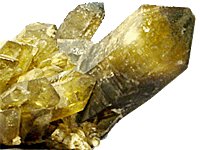
 Characteristics of the mineral.
Characteristics of the mineral.
Transparent quartz (silicon oxide) yellow-lemon color. It can be obtained by burning for many hours at a temperature of about 500 o C amethyst (lilac and violet quartz, an orange-yellow and yellow-brown citrine is produced) or rauchkvarts (smoky quartz, a soft yellow citrine is obtained). Natural citrine is usually light and often cloudy (or zoned) with zones of white or opaque quartz and cracks. Sometimes the natural citrine is very poorly colored. Crystals with a natural color have a weak pleochroism.
Citrine, a golden variety of quartz, due to its strength and rich color palette, is widely used in jewelry and is valued as a precious stone. It is a quartz (crystalline silicon oxide) of all shades of yellow, golden, orange and brown colors. Sunny-bright and light in processing, it looks great in jewelry of any style, especially sparkling and reflecting off the polished surface of gold. Although a darker, orange shade of citrine, sometimes called "Madera" (by the color of the wine of the same name), is considered preferable, most choose nevertheless bright lemon shades that go well with pastel tones. Scratches the glass. Sometimes citrine is confused with topaz (it is even harder than cirtin) because the colors of topaz and citrine may be similar, but the topaz is noticeably harder and qualitatively more expensive than quartz. In the faceted form, the color of citrine and topaz is the same.
Citrines are rare. Cytrine deposits associated with miarolic pegmatites and placers are known in Brazil (the states of Bahia, Goias, Minas Gerais), Madagascar, the USA (Colorado), Spain (Cordoba province), France and Great Britain (Scotland). In the CIS, magnificent crystals of citrine wine-yellow were found in the Urals, beautiful citrine found in Central Kazakhstan. Transparent, well-colored stones are limited and used in jewelry such as brooches, earrings, rings and pendants. Separate large crystals of natural citrine are cut by cabochons. Less attractive and translucent unevenly colored crystals go to the manufacture of necklaces, bracelets, etc. Citrines of rare and expensive shades are better not to acquire because of the instability of their color.
Most of the citrine that goes on sale is high-temperature amethysts, smoky quartz or moriones. Large transparent defect-free and evenly colored crystals of citrine or too dark (up to a brownish hue) crystals usually speak of the artificial origin of the stone or annealing. It is practically impossible to determine visually whether citrine is refined or not, has a natural or artificial coloring. Some citrine of a rare shade with time lose its color. The most important thing is not to buy less expensive citrine for the price of topaz and other expensive gemstones.
Natural citrine colored usually quite uniformly. If the citrine tip is much darker than the base, then this citrine is most likely obtained by many hours annealing of amethyst (it is the amethysts that have a pronounced uneven color along the crystal and retain this property after annealing).
The cost of citrine in the world market is currently relatively low due to the presence of virtually indistinguishable from natural synthetic and refined stones. Citrines today are actively synthesized from quartz raw materials and have a very high jewelry quality (faceted synthetic citrine can exceed the best natural or enriched analogs). The price of synthetic and refined natural citrine is the same.
For security reasons, we do not recommend the purchase of transparent, defect-free (without visible internal defects) samples of citrine and other transparent, defect-free stones larger than 1.5 x 1.5 x 1.5 cm in private collections. They can be officially leveled to jewelry raw materials and licensed Activity. If the sample is thin (regardless of the degree of defectiveness, thinner than 1.5 cm) - regardless of the area and other dimensions, it is not a raw material for the jewelry industry in principle.
Magic properties of stones.
Astrologers of the Middle Ages assured that wearing a ring with a citrine for the night gives a quiet sleep, relieving of nightmarish dreams and bad thoughts. In the daytime he warms his body and soul with his energy. Citrine is good for concentration of concentration, concentration. Citrine is a symbol of light, joy and good mood. His energy is like the sun giving warmth and life. Citrine is the perfect stone for regulating the physical condition of the owner and his psyche. It is believed that overly sensitive and vulnerable people are particularly encouraged to wear citrine. Being a powerful conductor of positive solar energy in the owner's environment, he contributes to the normalization of relations in the family, in work, in school. Citrine fills its owner with warmth and kindness. He is a talisman of gambling people: not warming up their temperament, citrine seeks to ensure their luck even in risky enterprises. Stone is also a mascot of speakers, soothsayers and very helpful in traveling. Citrine is both a talisman and a charm for all those who are engaged in creative work, especially those related to making something with their hands: sculptors, carvers, cabinetmakers, jewelers, etc.


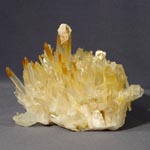
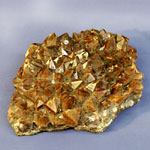
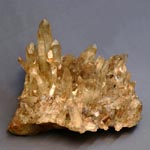
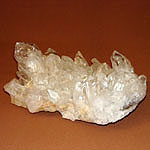


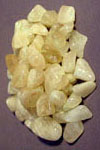
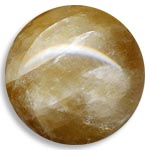

Poisonous and radioactive dangerous stones and minerals
** - poisonous stones and minerals (mandatory check in the chemical laboratory + explicit indication of toxicity).
** - radioactive stones and minerals (mandatory check on the standard dosimeter + ban on open sales in the case of radioactivity over 24 milli / g / h + additional measures of population protection).
All rare stones are subject to mandatory inspection at the standard dosimeter for the permissible level of radiation and in the chemical laboratory for the absence of poisonous and evaporating components that are dangerous to humans and the environment.


Comments
When commenting on, remember that the content and tone of your message can hurt the feelings of real people, show respect and tolerance to your interlocutors even if you do not share their opinion, your behavior in the conditions of freedom of expression and anonymity provided by the Internet, changes Not only virtual, but also the real world. All comments are hidden from the index, spam is controlled.